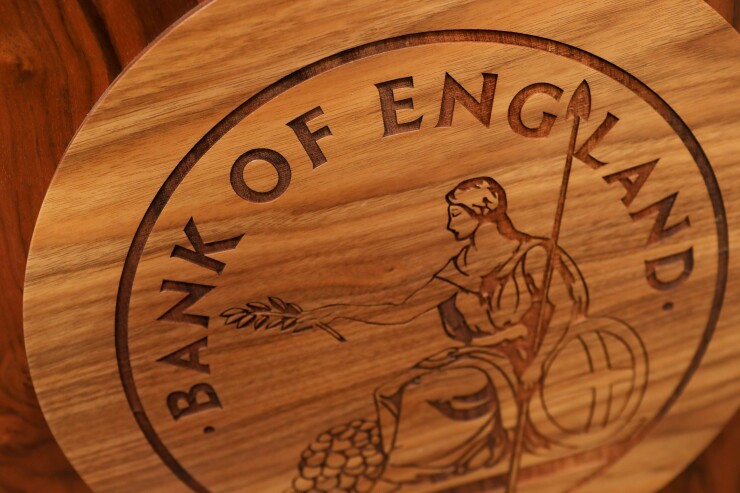The Bank of England plans to lift the amount of high-quality capital that banks must hold, even as it said the U.K.’s biggest lenders can weather a financial crisis.
The central bank said it will raise the buffer, which is designed to release funds if conditions deteriorate, to 2% from 1%. However, other tweaks to the capital rules mean banks will only need to increase the highest-quality capital, known as Tier 1, to about 14% from 13.7%, according to the BOE’s Financial Stability Report released on Monday.
The U.K.’s seven largest lenders also all passed the central bank’s latest stress test, showing they’re strong enough to continue lending even in a global downturn or in the event Britain leaves the European Union next year without a trade agreement.

“The resilience of U.K. lenders is confirmed as high, but we should also consider that it has become more and more difficult to design extreme scenarios,” said Angela Gallo, a finance lecturer at Cass Business School in London.
The 2019 scenario for the global economy “was sufficiently severe to encompass economic risks from both broader trade war and tensions in Hong Kong. Major U.K. banks were resilient to the stress scenario, and so will be able to continue to lend,” the report said.
The exam, designed to be tougher than the 2008 financial crisis, gauged banks against a 4.7% decline in U.K. economic output in a year, the BOE’s benchmark interest rate rising to 4% from the current 0.75%, and the unemployment rate climbing to 9.2%.
The banks tested were Royal Bank of Scotland Group, Lloyds Banking Group, HSBC Holdings, Barclays, Nationwide Building Society, Santander UK Group Holdings Plc and Standard Chartered.
“We expect U.K. banks’ capital ratios to remain stable over the next 12-18 months, as banks will likely offset lower organic capital generation by reducing their shareholder distributions,” said Edoardo Calandro at Moody’s Investors Service.
The changes to the countercyclical buffer will come into force in one year.
Also in the report, the BOE and the Financial Conduct Authority recommended tightening the rules on open-ended funds; recommended maintaining standards on mortgage lending; said payment chains that use stablecoins — digital currencies whose value is pegged to another asset — should be regulated to standards equivalent to traditional payment chains; and reiterated that banks need to be ready for Libor ceasing to exist from 2021.





